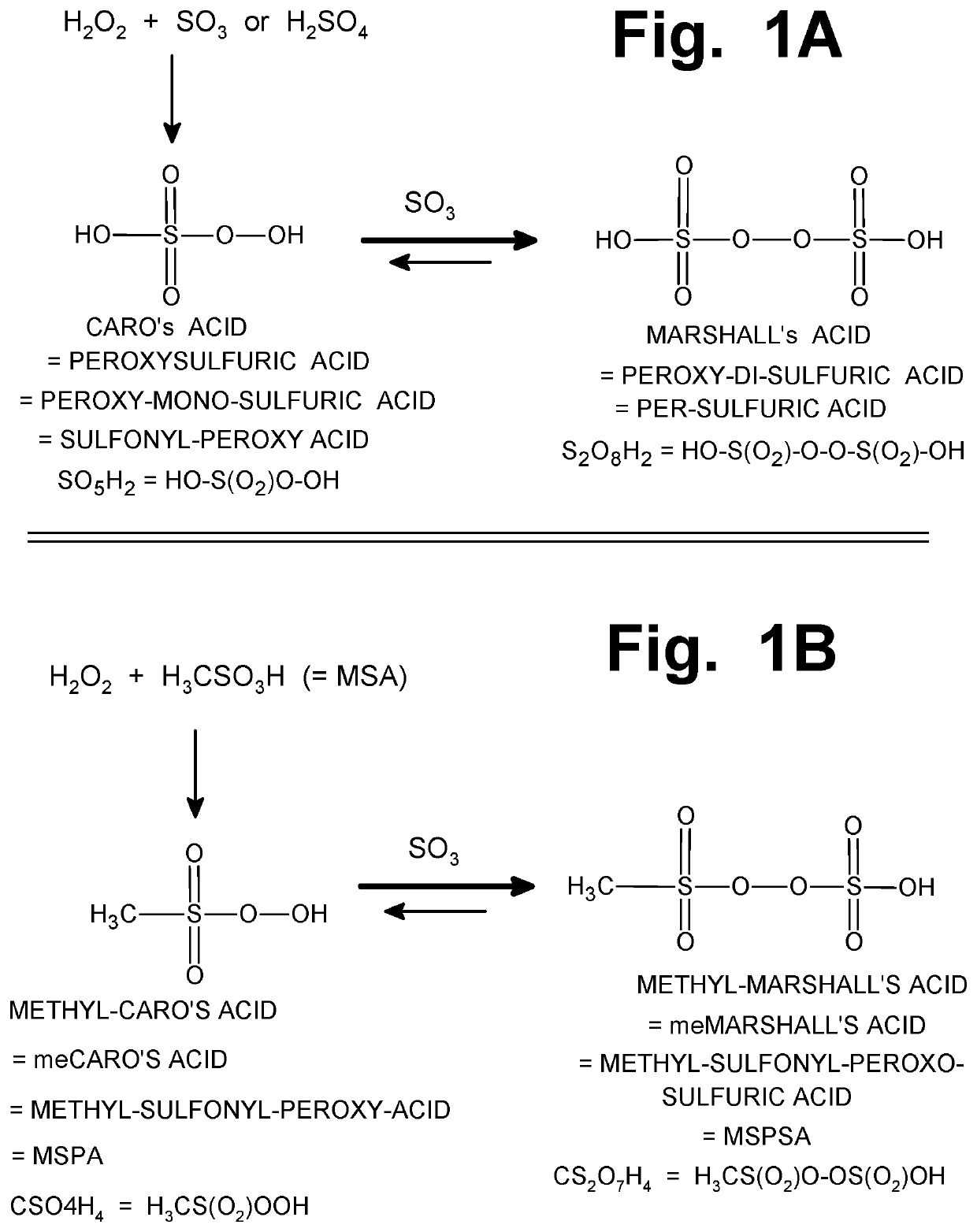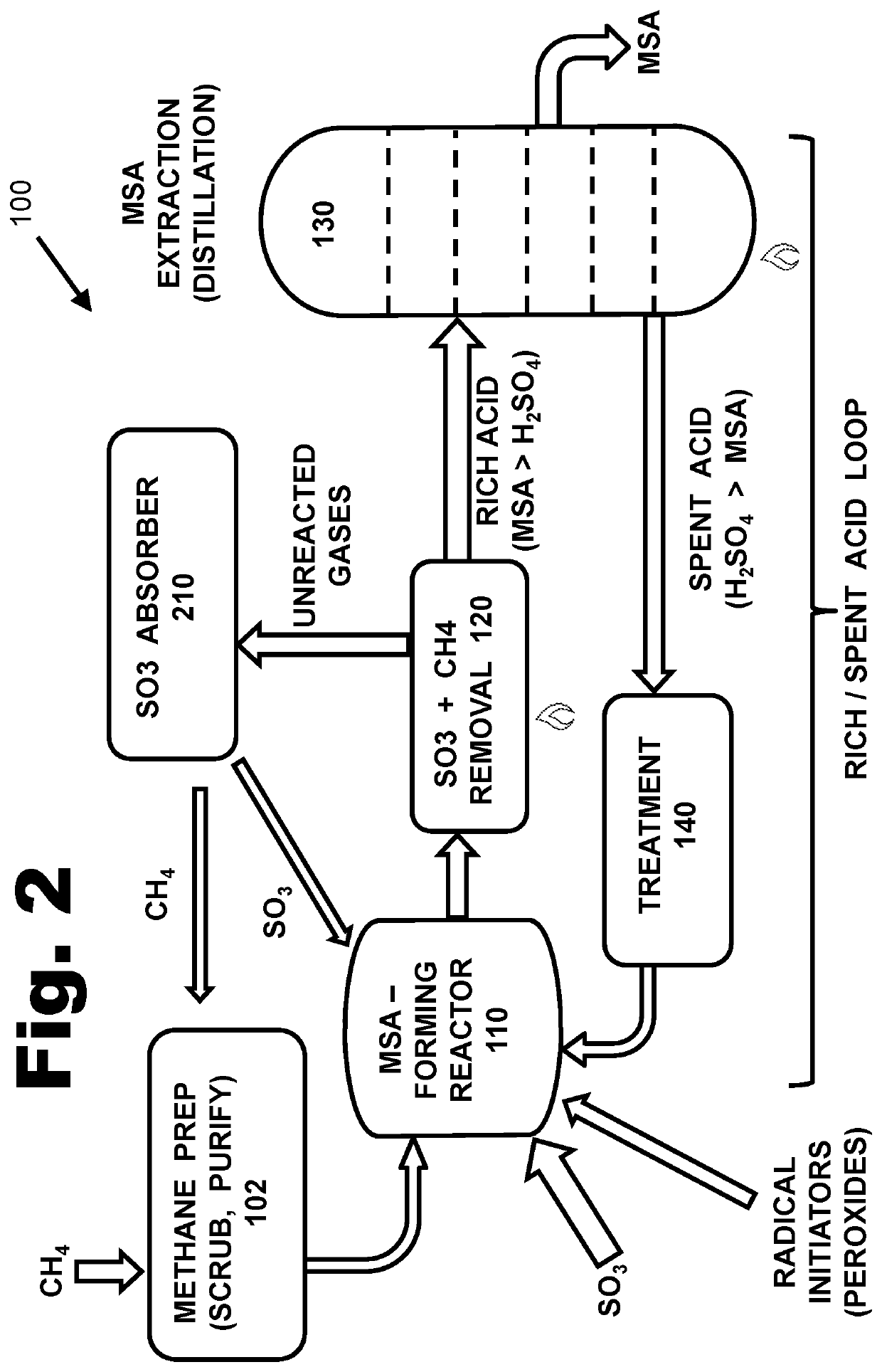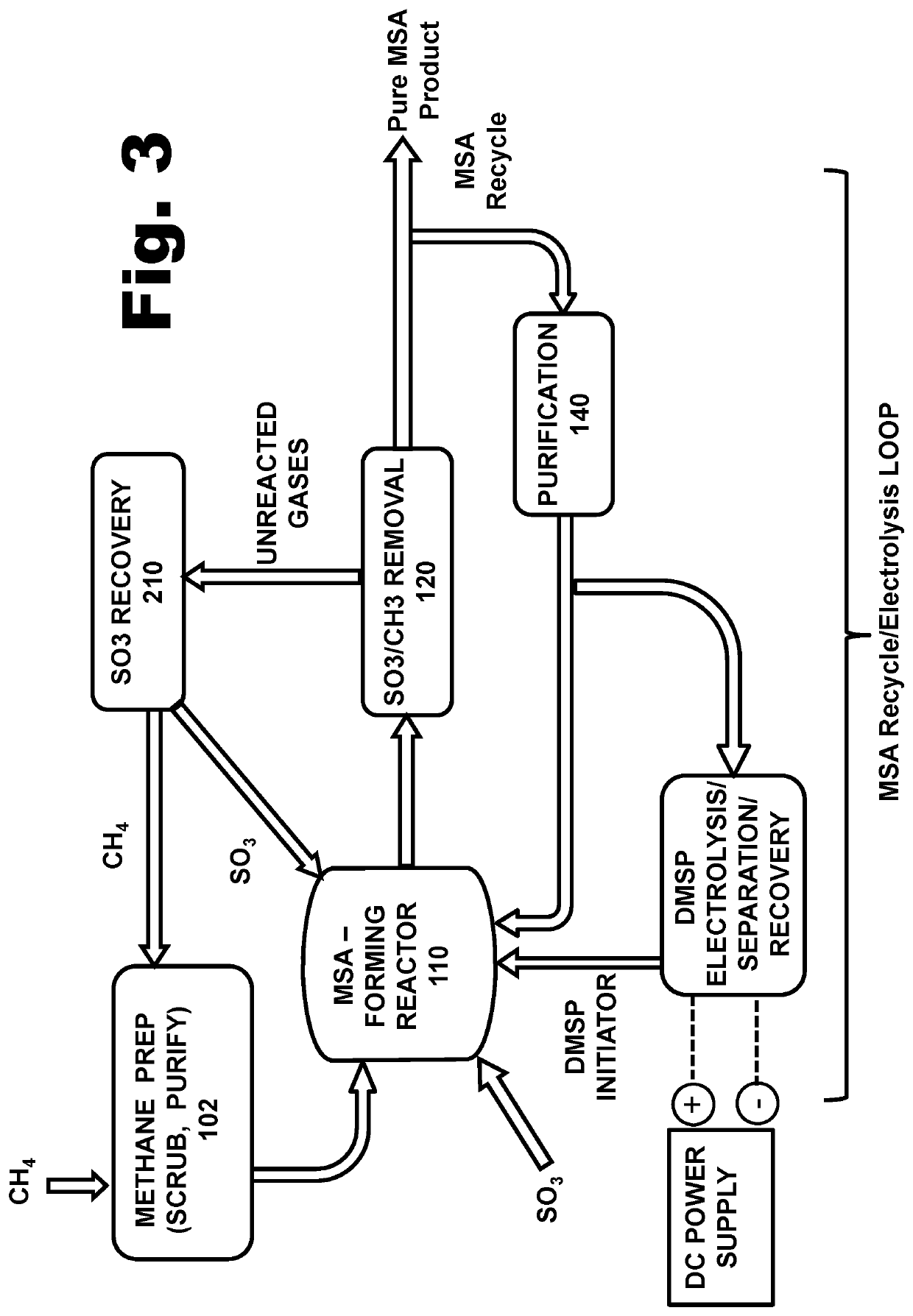Radical initiators and chain extenders for converting methane gas into methane-sulfonic acid
a technology of methane gas and chain extenders, which is applied in the field of organic chemistry and oil and gas processing, can solve the problems of no pipeline, no methane gas treatment pipeline, and large quantities of methane, and achieve the effect of increasing the yield and efficiency of a chemical manufacturing process
- Summary
- Abstract
- Description
- Claims
- Application Information
AI Technical Summary
Benefits of technology
Problems solved by technology
Method used
Image
Examples
example 1
on of Mecaro's Acid (Methyl Sulfonyl Peroxy Acid, MSPA)
[0241]The tests and results described in Examples 1-4 herein were initially described in U.S. provisional application 62 / 601,065, filed on Mar. 10, 2017, in Examples 1 & 2 therein. The description below has been expanded somewhat, to provide more information on exactly how these tests were carried out, and how the analytical work was performed.
[0242]As described above, the compound known as Methyl-Caro's Acid (also written as meCaro's, with the alternate name “Methyl Sulfonyl Peroxy Acid” (MSPA) can be added in relatively small quantities to a mixture of other sulfur-peroxide compounds that are being used to initiate the radical chain reaction which converts methane gas, into MSA, inside a reactor vessel. When added in that manner, the methyl-Caro's acid can serve as a potent oxidizing agent, to convert molecules of sulfur DI-oxide (SO2, an unwanted chain-terminating molecule) into SO3 (i.e., sulfur TRI-oxide, a desired and esse...
example 2
of MSA when Mecaro's Acid Used as Initiator
[0244]A 100-mL glass-lined high-pressure Parr autoclave reactor, equipped with a magnetic stirring bar, was loaded with 1.7 grams of SO3 in 4 grams of H2SO4. 0.4 mmol of the initiator solution (prepared as described above, containing meCaro's acid) was added. The reactor was purged with nitrogen gas (N2), then pressurized with methane gas (CH4) until a pressure of 100 “bar” (i.e., 100 times normal atmospheric (barometric) pressure) was reached. The reactor was heated to 55 C, with stirring. When measured after 4 hours, the pressure had dropped to 38 bar.
[0245]Surplus water was added, to convert unreacted SO3 to sulfuric acid. The liquid mixture of MSA, sulfuric acid, and water was then passed through a Dionex-100 ion chromatograph, using an AS4 column (www.thermofisher.com / order / catalog / product / 035311). That type of ion exchange column converts sulfuric acid into the sodium sulfate salt, and it converts MSA into the sodium mesylate salt. Th...
example 3
of Methyl-Sulfonyl-Peroxo-Sulfuric Acid (MeMarshall's Acid)
[0246]To synthesize meMarshall's acid, a mixture of 4 ml of 100% methane-sulfonic acid (MSA) and 6 ml of concentrated (fuming) sulfuric acid was created in an Erlenmeyer flask that was partially submerged in ice water. Vigorous stirring was commenced, using a magnetic stirring bar, and 0.5 ml of 50% (w / w) hydrogen peroxide was slowly added. This created the same compound described in Example 1 (i.e., methyl-Caro's acid), as an intermediate. After 20 minutes, 2.5 ml of 30% oleum (i.e., 30% S03 and 70% sulfuric acid, by weight) was added dropwise, with vigorous stirring.
PUM
| Property | Measurement | Unit |
|---|---|---|
| temperature | aaaaa | aaaaa |
| pressure | aaaaa | aaaaa |
| voltages | aaaaa | aaaaa |
Abstract
Description
Claims
Application Information
 Login to View More
Login to View More - R&D
- Intellectual Property
- Life Sciences
- Materials
- Tech Scout
- Unparalleled Data Quality
- Higher Quality Content
- 60% Fewer Hallucinations
Browse by: Latest US Patents, China's latest patents, Technical Efficacy Thesaurus, Application Domain, Technology Topic, Popular Technical Reports.
© 2025 PatSnap. All rights reserved.Legal|Privacy policy|Modern Slavery Act Transparency Statement|Sitemap|About US| Contact US: help@patsnap.com



